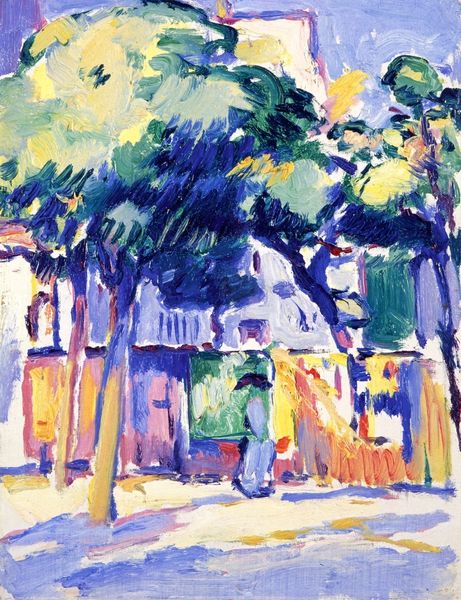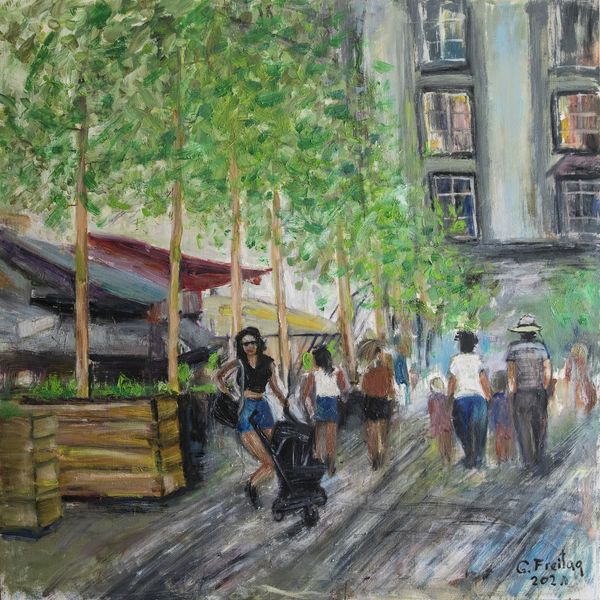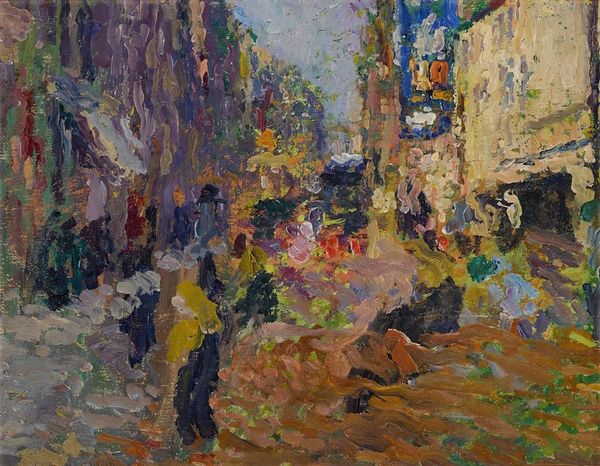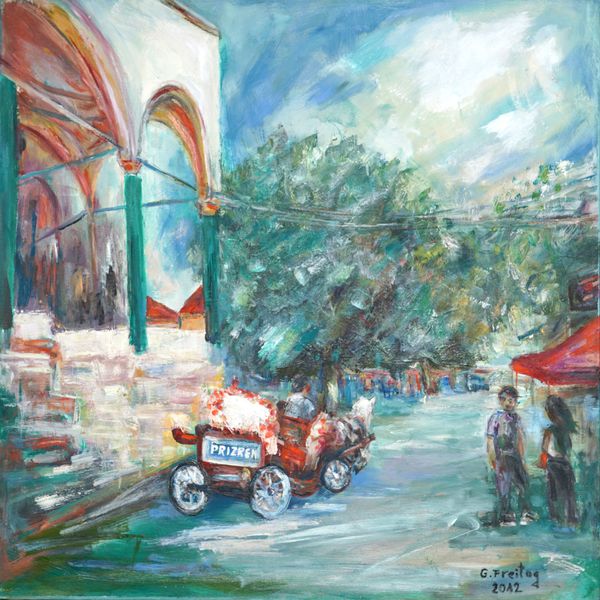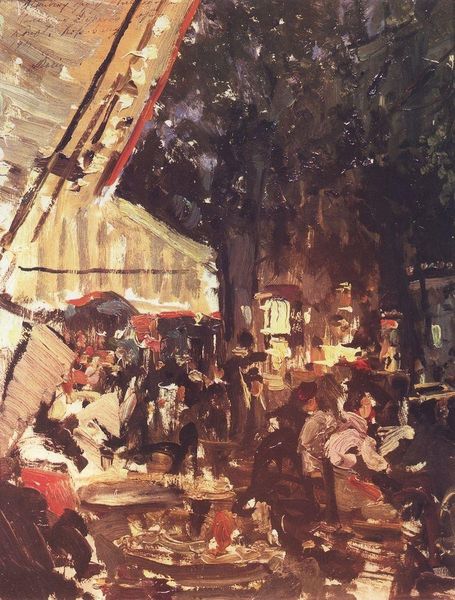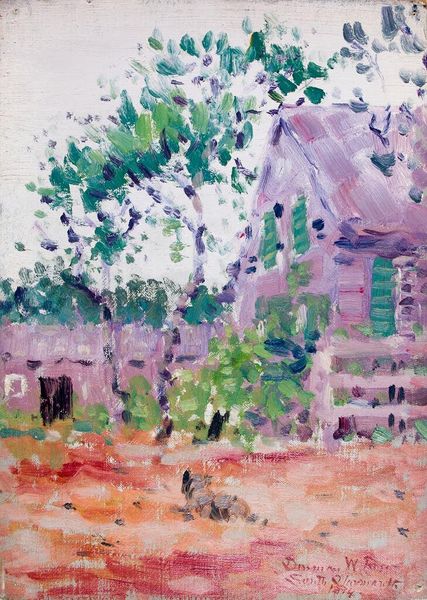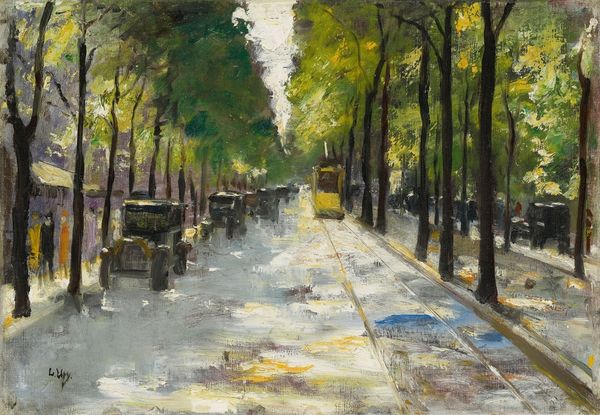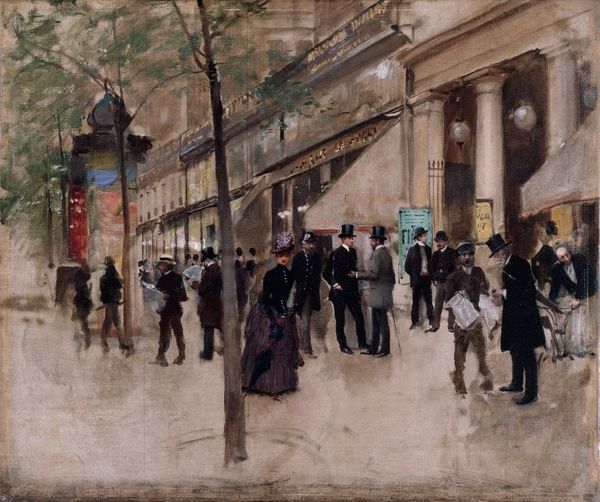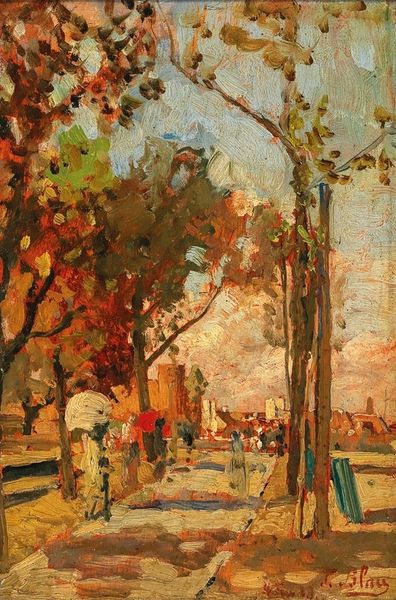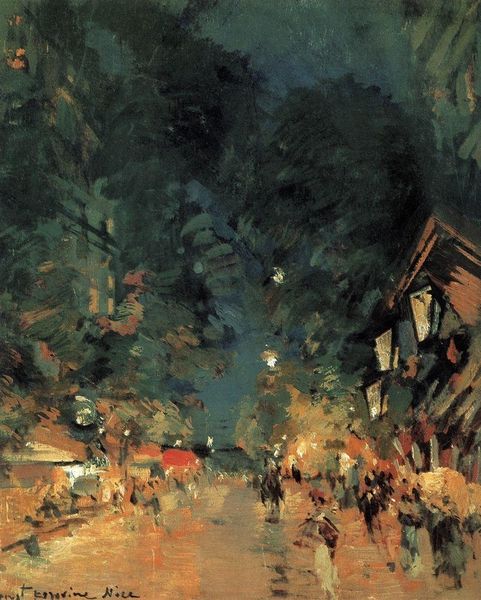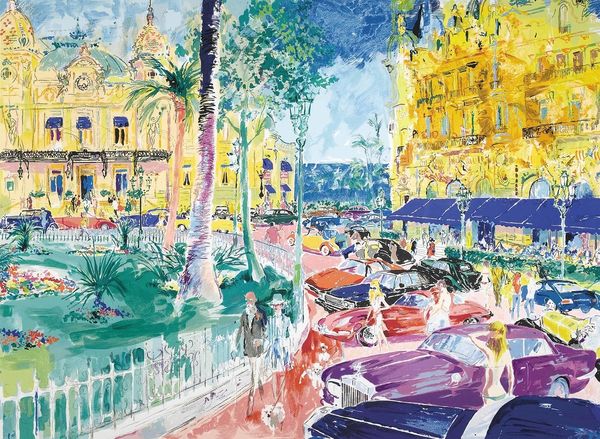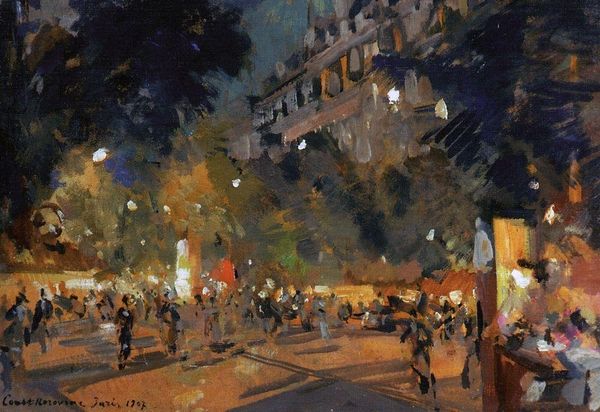
painting, plein-air, oil-paint
#
painting
#
impressionism
#
plein-air
#
oil-paint
#
landscape
#
impressionist landscape
#
oil painting
#
cityscape
#
street
#
building
Copyright: Public domain
Editor: So this is Childe Hassam’s "Rue Madeleine, Place de l'Opera," painted in 1888 with oil paint. The scene feels so alive, capturing a fleeting moment of Parisian street life. What strikes you most about it? Curator: Beyond its beauty, I see this work as a commentary on the changing urban landscape and the role of art in documenting it. Consider the era: rapid industrialization transformed Paris. How do you think Hassam situates himself within, or perhaps in opposition to, this changing society? Editor: I hadn’t thought about it that way. I just saw the beautiful Impressionistic style and bustling city life. Maybe he's finding beauty in the everyday, resisting the more industrial interpretations? Curator: Exactly. The painting style itself—plein-air Impressionism—democratized art-making by freeing the artist from the studio, embedding them into the life of the subject. Consider that: who historically *could* depict the streets and whose gaze do they invite? Editor: It seems very intentional. Capturing the social dynamics. Curator: Indeed. Also, Impressionism's focus on capturing fleeting moments and atmospheric conditions mirrors the rapidly changing urban experience. Is Hassam documenting or is he inventing? How might this imagery bolster or critique civic narratives? Editor: This is giving me a totally different way to consider Impressionism and its place in time. Seeing beyond just "pretty pictures." Curator: Precisely. It’s a reminder that art never exists in a vacuum. Editor: I will definitely think of art in a historical and social framework moving forward. Thank you!
Comments
No comments
Be the first to comment and join the conversation on the ultimate creative platform.
